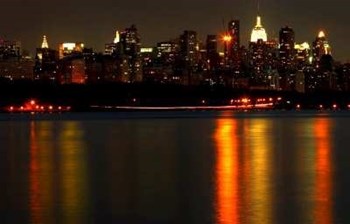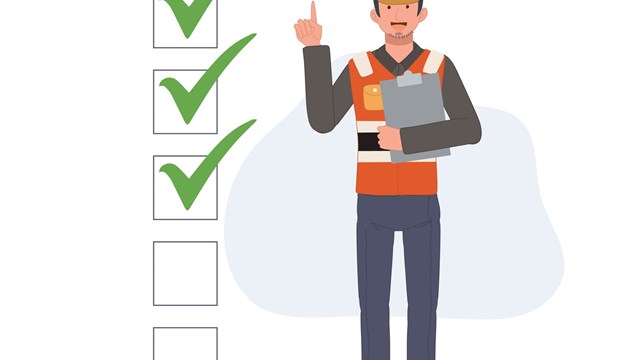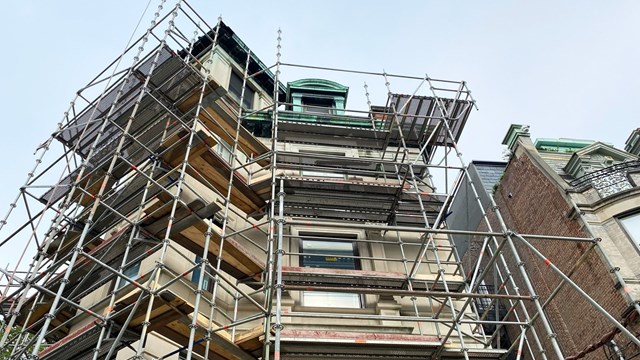
New York City's skyline is like none other and has a blend of classic and modern architecture that defines itself as one of the world's greatest cities.
Beset by the vagaries of weather and age, though, even the finest brick, limestone, sandstone, brownstone, glass or marble can fall into disrepair. In February of 1980, New York City passed Local Law 10 to promote public awareness to the importance of maintaining, restoring and preserving the city's architectural treasures. Local Law 10 mandated a visual examination at least once every five years of a building's exterior under the supervision of a licensed architect or licensed professional engineer on behalf of the building's owner.
The architect or engineer then was required to submit a written report to the Department of Buildings (DOB) including documentation of any unsafe conditions, and the owner had to begin repair work right away. According to the DOB, Local Law 10 specifically excluded exterior walls set back more than 25 feet from the street and/or any paved pedestrian walkways, plazas or play areas routinely used by the public; walls above the sixth story that were set back more than 25 feet from the wall below; exterior walls more than 25 feet on either side of a paved walkway at right angles to a building's walls that were used either for occupant or service portion egress; and buildings that had an ongoing exterior wall maintenance program acceptable to the DOB.
However, by the end of 1997, after several tragic events—including the death of a 16-year-old student hit by a falling brick and a collapsed office building wall on Madison Avenue—city officials were compelled to pass Local Law 11 in March 1998 as a replacement to Local Law 10. Local Law 11 was a lot more stringent.
"The first major change under Local Law 11 was that all façades of the building had to be inspected," explains Alan Epstein, PE, MSCE, Esq., a licensed professional engineer, attorney, and president of Manhattan-based Epstein Engineering PC. "This meant that both the time and cost of the basic Local Law 11 inspection were going to be greater than under Local Law 10."
Mandatory Inspection Process
Local Law 11, according to Epstein's booklet, "Manual for Local Law 11 Compliance," requires the periodic inspection of the exterior facades of all buildings in New York City which are greater than six stories in height. Inspections which are done at five-year intervals must be performed by a licensed professional engineer or a registered architect. A written technical report or TR-6 must be prepared and filed with the DOB.
Filing runs in two-year cycles. Current compliance with Local Law 11's Cycle 6 is required. Cycle 6 filing deadlines extended from February 21, 2005 to February 21, 2007. No distinction is made for commercial buildings, says Epstein, the law applies equally to apartment buildings, co-ops, condominiums, industrial buildings, even hospitals. Façade type is also not relevant - stone, brick, glass, metal or other exterior materials—are subject to inspection.
There are approximately 12,000 commercial and residential buildings in New York City that fall under the auspices of Local Law 11 compliance, Epstein says. Throughout the course of one cycle, the total costs associated with Local Law 11 work done citywide, he says, is in the neighborhood of about $10 billion dollars. The next phase—Cycle 7—with its two-year filing period will begin on February 21, 2010 and run until February 2012, according to the DOB.
Inspection from Above
Under Local Law 11/98, a minimum of one platform/scaffold inspection must be performed relative to a portion of the façade, according to Epstein. And this inspection must be both a visual and a physical/hands-on inspection with a platform or scaffold; no longer are just visual examinations allowed.
There are three basic categories in which buildings may be identified under Local Law 11. A building could be labeled as Safe, as Unsafe, which means a problem exists that has to be handled immediately, or "Safe with a Repair and Maintenance Program," or more concisely, SWARMP. A SWARMP classification can either mean that a building is fine, or major or minor repairs need to be made.
Examples of typical unsafe conditions include: loose brickwork, spalling concrete, leaning parapets, bulged masonry, cracked or broken windows or glass, fractured terra cotta, cracked bricks, loose metal, improperly secured air conditioning units, and any loose material, such as wood, bricks, debris, planters and the like. The law requires that unsafe conditions be repaired immediately—technically within a 30 day time frame - and a report thereafter filed with the DOB. An extension may be given if needed to complete the necessary repairs.
Without benefit of an extension from DOB, buildings with conditions previously classified as SWARMP in Cycle 5 were required to be repaired prior to the filing deadline for Cycle 6 or they could face violations which warrant serious fines and penalties, according to Epstein.
Excessive Penalties May Be Levied
If issued, Local Law 11 violations are typically resolved through a hearing before the city's Environmental Control Board (ECB). The ECB is an administrative tribunal that provides hearings on notices of violation issued by certain city agencies for various "quality of life" infractions of the city's laws and rules. As a judicial entity, ECB does not issue notices of violation, does not establish enforcement policies, does not employ inspectors or agents, and does not direct, control or otherwise influence where, when or to whom notices are to be issued. Once a notice of violation is issued, however, the matter may only be resolved through the adjudication process of the board.
Extensions are not granted to buildings not filing by the deadline, according to DOB spokesman Kate Lindquist, and if a building failed to file a report by the February 21st deadline, the department "imposes a penalty of $150 per month until an acceptable report is submitted. In addition, the department issues ECB violations to the building owner who fails to file by the deadline. ECB violations issued for failure to file a Local Law 11 report can result in penalties as high as $2,500 for the first offense, and $10,000 for a second offense," according to Lindquist.
Local Law 11 should not be considered a hindrance. In fact, says Eugene Ferrara, CSI, of JMA Consultants in North Bergen New Jersey, once buildings are caught up with Local Law 11 and maintain a regular schedule, the cost stays under control. Ultimately, the law is beneficial to buildings, he says.
"Local Law 11 shouldn't be looked at as a hindrance to building owners," Ferrara says. "It should be utilized the way a physical with a doctor is for a person. It's done to catch major issues before they become catastrophic and financially destructive. And this can only be done with qualified people looking at the buildings."
Debra A. Estock is the managing editor of The Cooperator.






Leave a Comment